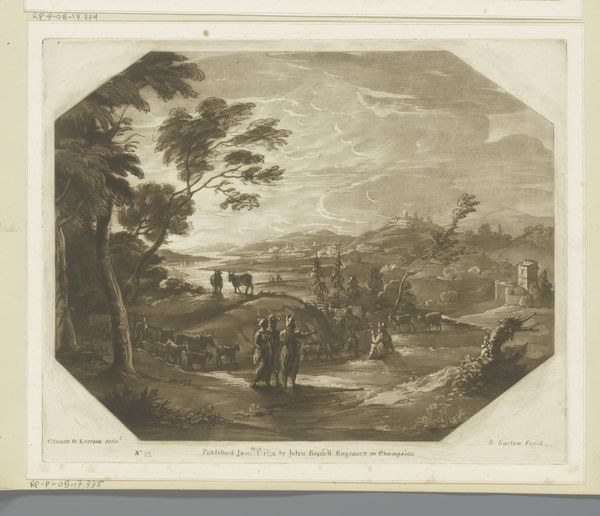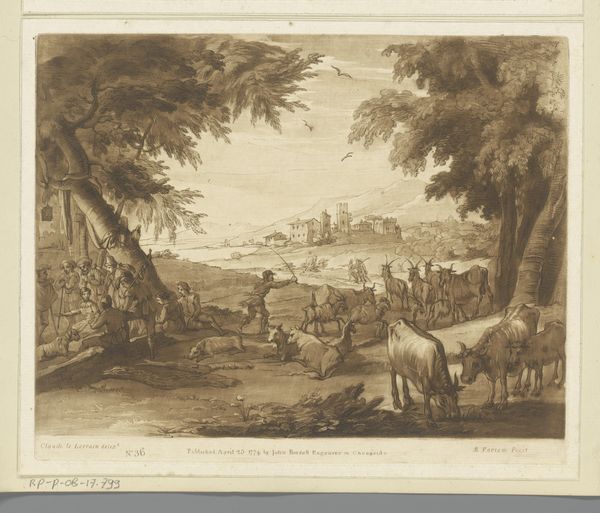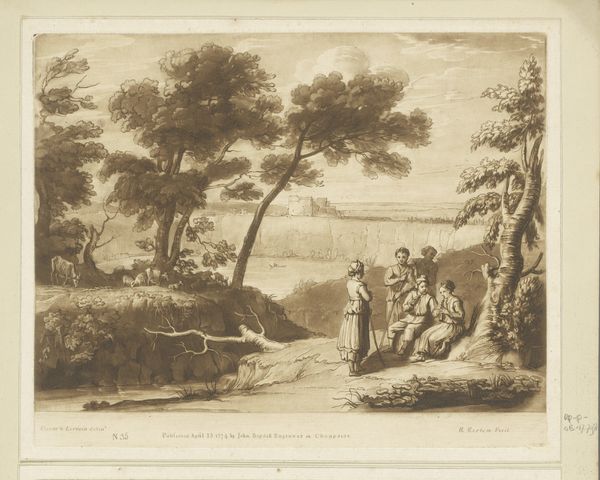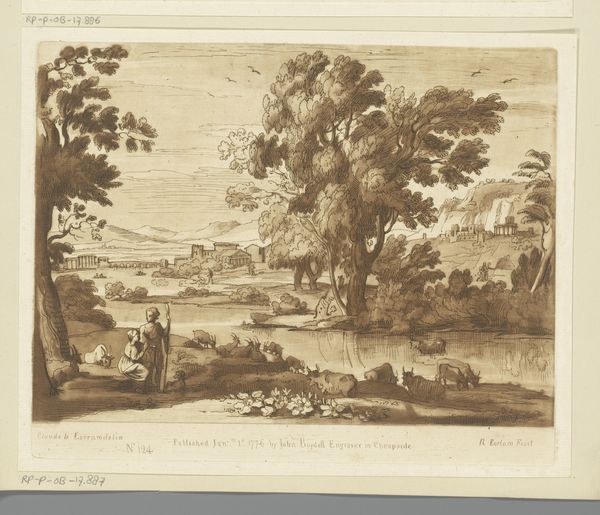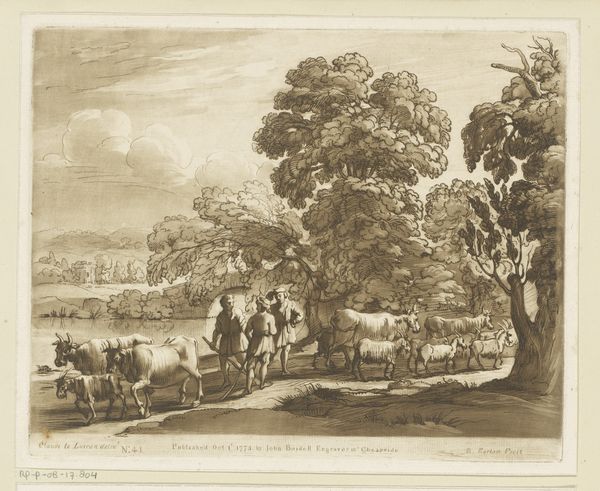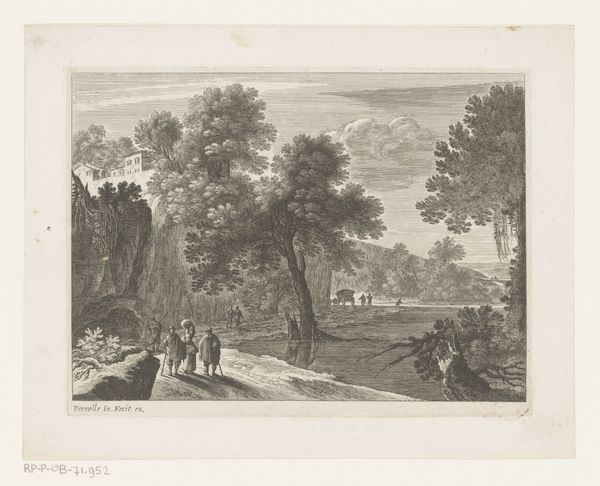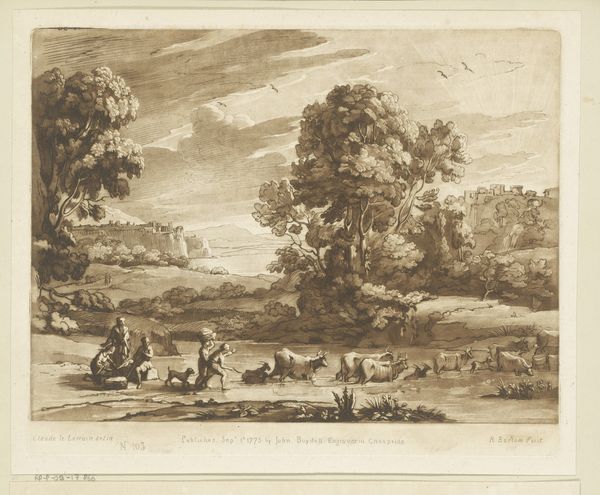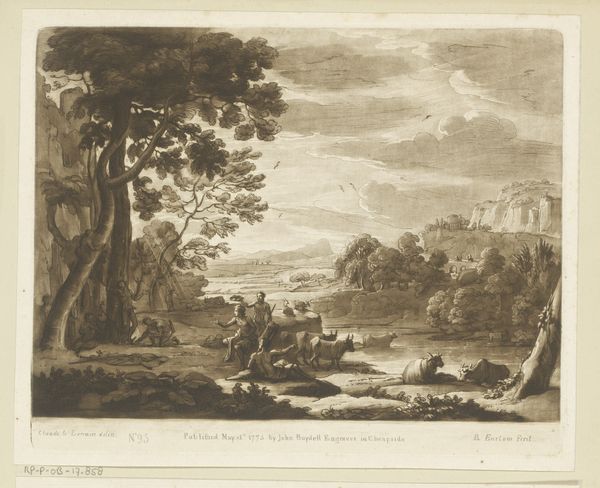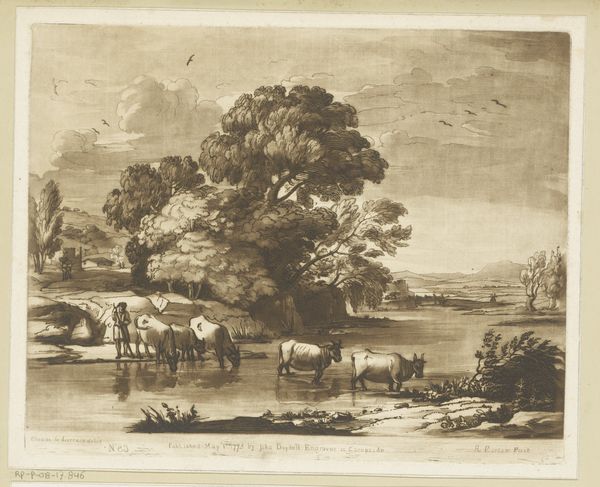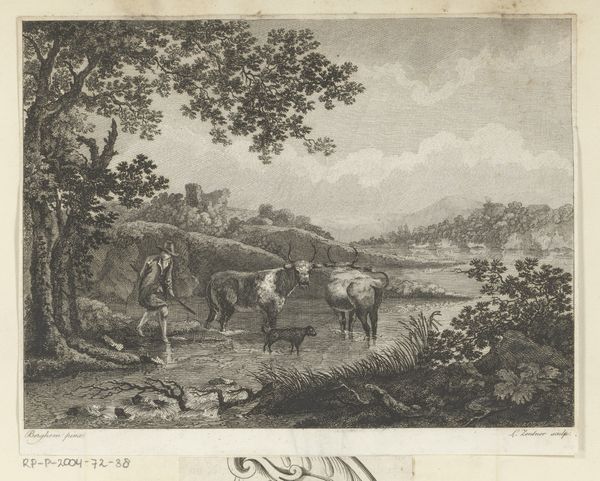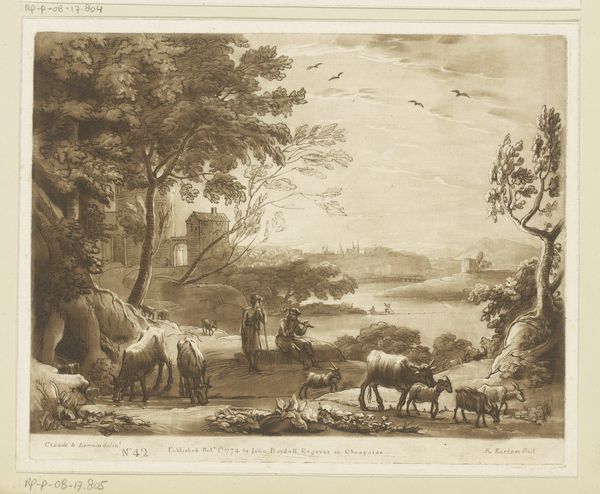
Landschap met herder en vee aan de oever van een rivier Possibly 1774
0:00
0:00
richardearlom
Rijksmuseum
Dimensions: height 210 mm, width 259 mm
Copyright: Rijks Museum: Open Domain
Richard Earlom created this print, "Landschap met herder en vee aan de oever van een rivier," using etching and engraving techniques. These processes involve covering a metal plate with a waxy ground, then scratching an image into it. The plate is then bathed in acid, which bites into the exposed lines. Ink is applied, the surface wiped clean, and the print is made. The material properties of the metal plate and the acid's bite dictate the precision and depth of the lines, influencing the work’s tonal range. The final print, a mirror image of the original design, captures a pastoral scene with remarkable detail. Earlom wasn't inventing this image wholesale, but rather reproducing it. Printmaking like this served as a crucial means of distributing images widely, connecting artists and audiences across geographical boundaries. His craft was essential to the art market of his day. This print bridges skilled handwork with the growth of commercial art.
Comments
No comments
Be the first to comment and join the conversation on the ultimate creative platform.
